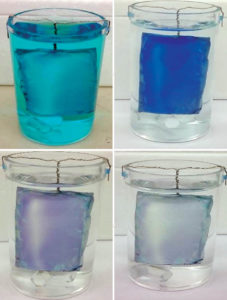
It’s called bait, hook and destroy, a process that removes pollutants from water. While it sounds dramatic, the process is achieved using a polymer mat that can target harmful contaminants and fish them out.
Developed by scientists at the Rice University-led Nanotechnology-Enabled Water Treatment (NEWT) Center, the mat employs titanium dioxide, a common material used in some wastewater treatment systems. Normally it is turned into a slurry, combined with wastewater and exposed to ultraviolet light to destroy contaminants, after which the slurry is filtered from the water.
The process is simplified with the polymer mat. Made of spun polyvinyl fibers, it is highly porous due to a process that involves adding small plastic beads that are dissolved with chemicals. The pores offer a sufficient surface area for titanium oxide particles to inhabit and activate.
The mat’s fibers naturally attract water-avoiding contaminants. Once bound to the mat, exposure to light triggers the photocatalytic titanium dioxide, which produces reactive oxygen species (ROS) that destroy the contaminants.
Tests conducted by NEWT scientists demonstrated that the mat efficiently removed targeted pollutants, in this case a pair of biologically harmful endocrine disruptors, using a fraction of the energy required by other technology. The technique can also be used to treat drinking water. For further details, visit www.news.rice.edu.
 TEXTILES.ORG
TEXTILES.ORG


